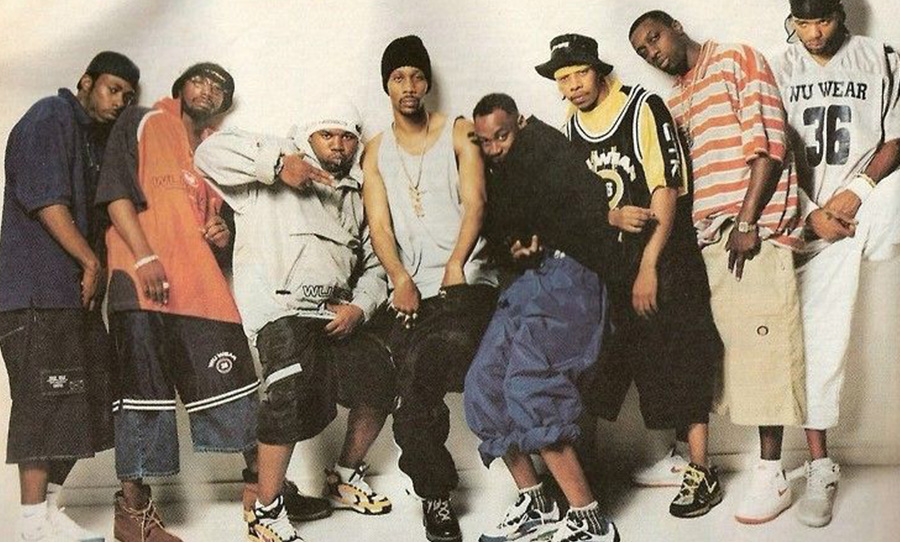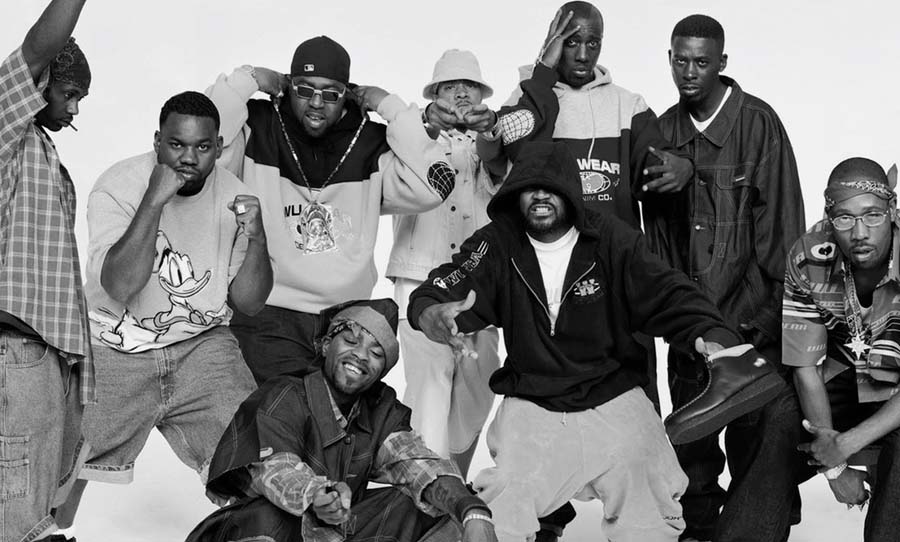Here’s what went into making Wu-Tang Clan’s Enter the Wu-Tang (36 Chambers), regarded as one of the touchstones of hip-hop.
By Oliver Newland and Anthony Sfirse
With the golden age of hip-hop in full swing, 1993 saw the release of three landmark albums in the thriving genre. West-Coast hip-hop was dominating the airwaves and G-Funk was emerging as a popular subgenre, thanks to the releases of Dr Dre’s The Chronic and Doggystyle by the fresh-faced Snoop Doggy Dogg. But one nine-man group from New York (Staten Island to be exact) transformed the scene on November 9 1993, releasing the 62 minute masterpiece Enter the Wu-Tang (36 Chambers).
Wu-Tang Clan first piqued the interest of radio stations and record labels with their 1992 release Protect Ya Neck. Eventually signing with Loud Records, Wu-Tang Clan’s first single gave the public the first taste of the group’s ethos which, as explained by de facto leader RZA in a 2015 interview with The Boston Phoenix, consists of “Eastern philosophy picked up from kung fu movies, watered-down Nation of Islam preaching picked up on the New York streets, and comic books.”
RZA, GZA, Ghostface Killah, Ol’ Dirty Bastard, Raekwon, Method Man, U-God, Masta Killa and Inspectah Deck crafted their debut album from late 1992 to 1993, perfecting their incredible and unique blend of gritty beats, explicit yet tongue-in-cheek lyricism, manipulated soul samples and martial arts film grabs.
Budget restrictions and minimalist production
Due to the lack of funds available to record 36 Chambers, Wu-Tang Clan recorded their debut LP in New York City’s Firehouse Studio: a dimly-lit, minuscule, and cheap recording space. With as many as eight or nine of the Wu-Tang members in the recording studio at once, producer RZA would often struggle to reach the knobs of his mixing desk.
The lack of an adequate budget greatly influenced the raw production that became on of the hallmarks of the album. Most of the equipment used was either borrowed from friends of the group or bought as second-hand and vintage pieces. In fact, all three of the sampler workstations used on the album, the E-mu SP-1200, Ensoniq EPS 16+ and ARS-10, were all borrowed from fellow Staten Island musicians.
Aside from the tiny budget and using worn-out equipment, a lot of the lo-fi quality can be traced back to the group’s lack of production experience. Though RZA had produced an EP two years earlier, he wasn’t the most technically skilled when it came to setting up microphones and dealing with complex mixes. In a 2013 interview with Spin, mastering engineer Chris Gehringer said, “It was a little bit of a shit-show! It wasn’t the cleanest of audio, and it wasn’t audiophile material, and they didn’t spend a lot of time miking and recording stuff, but sometimes art shows up in funny ways.”
Crafting Eastern collages
As life-long lovers of martial arts and kung-fu films, the nine-man rap group named themselves after the 1983 Hong Kong movie Shaolin and Wu-Tang. Aside from this nod, and naming the two sides of their LP after the two martial arts schools, the album’s opening track Bring the Ruckus begins with a sample of the film. Even before the booming kick drum enters the song, this small grab of dialogue from the kung-fu film perfectly sets the cut-throat tone prevalent throughout the entire album.
Many more martial arts films, including Executioners from Shaolin, Ten Tigers from Kwangtung, to Five Deadly Venoms, were sampled throughout the record. From the rapid-fire fists of fury in Shame on a N**** to outlining the intricacies of chess in Da Mystery of Chessboxin, each grab of dialogue was a lot more than a loving homage — the Wu created a dark, Eastern-influenced atmosphere that was, at the time, largely unprecedented in hip-hop.
Manipulating soul samples
In contrast to the melodic synth-driven G-Funk of the time, the RZA and the Wu-Tang Clan as a whole largely relied on sampling soul and jazz songs from the ’50s and ’60s. Everything from Thelonious Monk to Otis Reading, The Jackson 5, and even Barbra Streisand were all sampled for the album.
Though sampling drum loops and piano chords from old soul numbers had been done prior to the release of Enter the Wu-Tang (36 Chambers), it was how RZA warped and manipulated his samples that was unique. The RZA would take a sample from a song and either slow it down to fit the desired tempo or speed it up to create a chipmunk effect.
For example, Shame on a N**** is one of the most well-known songs from the album and opens up with a booming horn section. The horns were sampled from the outro of the 1968 song Different Strokes by Syl Johnson, with RZA slowing down the speed of the sample and lowering the pitch of the lively horn section.
This technique would go on to greatly influence hip-hop production for years to come. The minimalist and grimy soul samples on Enter the Wu-Tang (36 Chambers) provided the perfect blueprint for up and coming hardcore hip-hop artists. Many current-day producers have opened up about how RZA’s sampling techniques have influenced them. The Alchemist, Just Blaze, and even Kanye West have all expressed their admiration for RZA and heavily rely on the sampling technique pioneered on the album.

Trademark Wu-Tang vocals and uncompromising lyricism
When it came to recording the vocals for the album, RZA kept the set-up rather simple. The only microphone to be used on the album was the AKG C414 EB with very minimal effects applied to the vocals.
The most prominent effects unit used on the album was the Tascam 122 MKII, imparting a subtle analog slap-back to the vocal tracks. The use of this effect is perhaps most noticeable in the album’s opening song, as well as during the opening moments of Clan in da Front.
Though nine different MC’s appear on the album, each voice was easily distinguishable. The raspy and chaotic delivery of Ol’ Dirty Bastard, the monotonous tone of GZA, Raekwon’s commanding voice – each member of the Wu-Tang Clan brought their own unique style and flavour to the album, all tied together through the common themes of comic books, kung-fu, chess, smoking weed and life in New York City.
The dark, explicit, yet humorous nature of the lyrics were unlike anything occurring at the time in hip-hop, and Wu-Tang found the perfect combination to set themselves apart from their contemporaries. Combining the aggression and violent imagery of N.W.A with the comedic skits and playful tone of De La Soul – and with a dash of grainy analog charm – Enter the Wu-Tang (36 Chambers) was a landmark release for its time and still ranks among the most innovative and influential hip-hop albums ever created.



